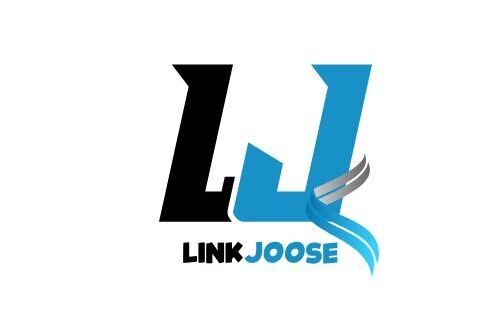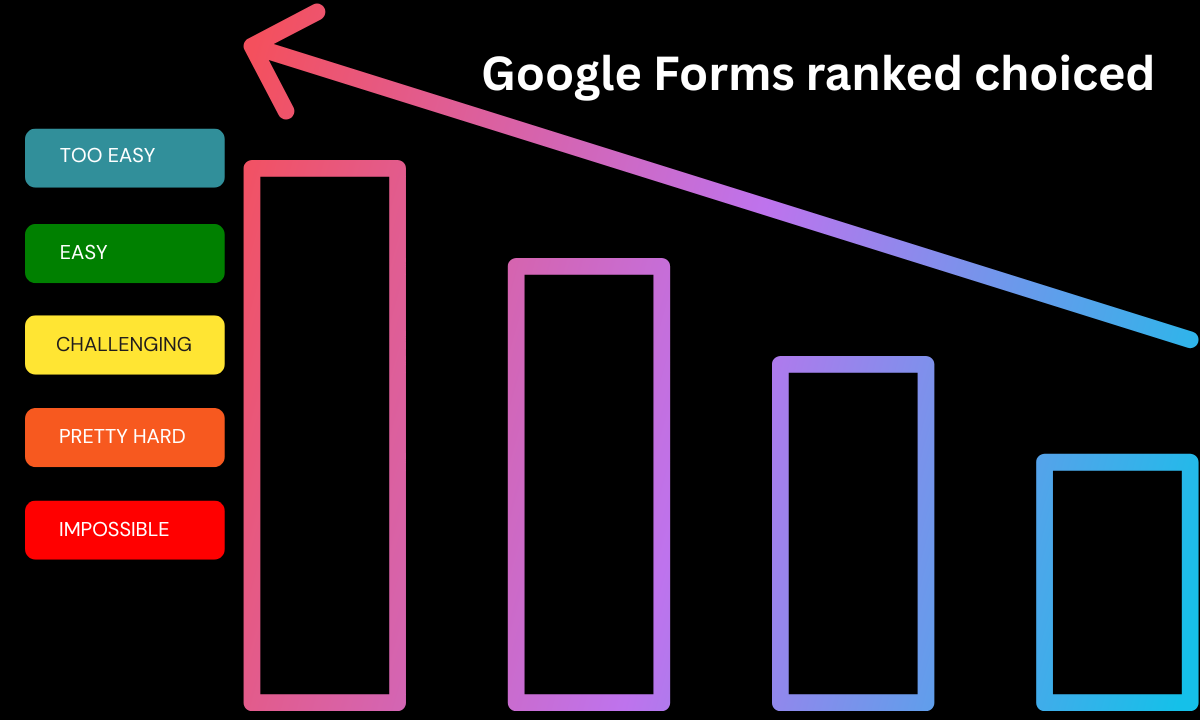Google Forms Ranked Choice:
In this fast-growing digital generation, it is consequential that increasingly important and widespread decision-making application systems are developed. To this end, people, organizations, schools, and communities need systems that can fairly and accurately reflect collective preference for the group. A tool that reflects this growing trend is Google Forms ranked choice.
The idea with Google Forms ranked choice is a contemporary practicality for conducting procedurally fair, more accurate, and more democratic voting or selection processes for whatever purposes-cubicle politics about electing a new team leader, planning a vacation with the family, choosing speakers for a conference, or classroom elections. Google Forms ranked choice would indeed give a means to a decision that would truly reflect the voice of the majority, rather than the loudest or even most organized minority.
One ought to appreciate and learn the value and use of Google Forms ranked choice if one is serious about coming up with fair decisions. This guide is titled “The Complete Guide to Google Forms Ranked Choice” It covers every critical aspect of Google Forms ranked choice and leaves nothing uncovered.
Understanding Google Forms Voting by Ranking Choice
The Google Forms ranked choice voting concept is one that is fundamentally simple yet fundamentally transformational. Rather than making participants pick one favorite option, the participants rank more options. With a ranking system, voters express not only their top choice but also how they feel about the other options.
Google Forms ranked choice, when considered with Google Forms, a well-known free platform that virtually anyone can access, becomes a viable tool for reaching a consensus and avoiding conflicts.
Compared with the traditional voting or surveying methods which bound each voter to pick only one option, Google Forms ranked choice paints a more exhaustive picture of the collective preferences. The more one can express options, the more balanced and fair the outcome will be.
The Mechanics of Google Forms Ranked Choice
A basic premise of the way ranked-choice voting is understood is necessary in order to apply the ranked choice on Google Forms:
1.Counting First-Choice Votes: All the first-choice picks by all voters are counted and recorded first.
2.Wins by Majority: An option is declared immediately if it has garnered over 50% of the first-choice votes.
3.Lowest Votes Eliminated: If there is no majority, the option with the least votes of first-choice preference is discarded.
4.Redistributing Votes: Those that have voted for the discarded option will have their votes redistributed to their next favorite choice.
5.Repeat: The process of elimination with an ensuing redistribution will continue until one option achieves the necessary majority.
All the aforementioned is executed in the context of Google Forms ranked choice either manually via Google Sheets, with augmentations from scripts, or easily through add-ons; but the concept is always the same: step-by-step elimination and redistribution according to voter rankings until a real majority comes out.
Reasons Behind the Rise of Google Forms Ranked Choice Voting
The reason for the increasing popularity of Google Forms’ ranked choice voting is no accident. There are various factors that support the idea of its adoption by more people and organizations:
True Representation of the Majority
Under traditional first-past-the-post elections, a candidate may be elected after winning 30% of the votes. The other votes must have been split among the other alternatives. This method of election often leads to feelings of bitterness and dissatisfaction. Google Forms helps to rectify this by ensuring that elected candidates do have truly broad-based support.
Reduction of Strategic Voting
In many electoral systems, people vote strategically rather than sincerely, backing candidates that they perceive to be more “electable” instead of their genuine favorite. The Google Forms ranked choice method reduces most motivations for strategic voting.
Encourages Positive Campaigning
Candidates or options benefit when they are placed as second or third choice by many voters. It encourages less negativity and more broad appeal, a dynamic to see even in non-political situations in Google Forms ranked choice.
Simplifying Complex Choices
Amidst selecting many close alternatives, Google Forms ranked choice refines the ability to express preferences. Voters can comfortably express very subtle preferences without any constraining stress of a binary choice; voted for this-or-that.
Step-by-Step: How to Set Up Google Forms Ranked Choice
Creating a good Google Forms ranked-choice ballot takes a lot of careful planning and executing. Let us deal with it systematically:
Step 1: Open a New Google Form
Go to forms.google.com and open up a blank form. The title and description for the form must clearly indicate that this is a Google Forms ranked-choice ballot.
Example:
Title: “Best New Product Selection – Ranked Choice Ballot”
Description: “Please rank the following products in order of preference (1st choice, 2nd choice, etc.). Your rankings will help us select the product that best meets everyone’s needs.”
Step 2: Choose Questions Proper
The best question types for Google Forms ranked-choice are Multiple-Choice Grid or Dropdown type.
Multiple Choice Grid:
Allows for ranking each row (candidate or option) against the columns (1st, 2nd, etc.).
Dropdown:
Lets a user rank the different options one at a time with dropdown selections.
Multiple-choice grid provides a more intuitive choice visually for the respondent and also is way easier to analyze later.
Step 3: Organizing Choices
Rows:
Add candidates/options/ideas.
Columns:
Labels such as “First Choice,” “Second Choice,” “Third Choice,” etc.
Important settings:
Require a response for each row to ensure that full ranking is gathered.
Where applicable, require a single response per column, to avoid duplicate responses.
Also, clarity of instructions here is paramount. A good Google Forms ranked choice form does everything possible to avoid confusion, such as providing examples.
Step 4: Form Configuration.
Main settings to be enabled:
Limit to 1 response: This prevents duplicate voting.
Shuffle row order: This randomizes the option order and prevents positional bias.
Step 5: Distributing Forms and Collection of Responses
When you’re satisfied, send the link to the Google Forms rank choice via email, newsletters, or any other internal communication platform. Ensure that a deadline is communicated for timely collection of responses.
Step 6: Data Analysis
. After the responses are in,
. Export the results on Google Sheets.
. Start tallying the ranked choice manually or by using automation.
You expedite the highlighting of the 1st choice selection by using conditional formatting.
Methodologies for Best Implementation: Google Forms Ranked Choice
Ranked-choice voting via Google Forms, when correctly executed, can be a powerful tool; when poorly executed, it does little to benefit anyone. Here are a few best practices:
Clear Instructions
Before voters begin to rank their choices, they need to know in full:
How to rank her choices.
How their rankings will be utilized.
That otherwise lower-ranked choices can matter if top choices get eliminated.
An example ranking can lead to much more accurate results in your Google Forms ranked-choice survey.
Choice Numbering That Makes Sense
Presenting anything past 30 options is an overwhelming process for respondents to engage with the tool meaningfully. Be reasonable.
Fair Description of Options
If one describes options (i.e., candidates, ideas, or items), all options must be described uniformly and neutrally to avoid bias.
Mobile-Friendly Design
Do keep in mind that a fair number of users will be accessing your Google Forms ranked-choice ballot on mobile devices. You want to keep the form simple, clean, and easy to navigate.
Common Problems and Solutions When Using Google Forms Ranked Choice
Although Google Forms ranked choice is user-friendly in a general sense, it is nonetheless possible to have some challenges. Herewith the remedies:
Problem: Unclear nature of the ranking process
Solution:
Provide explicit instructions and sample ballots in your form description or in fact as the first question in the form itself.
Problem:
Respondents skip ranking
Solution: Make ranking compulsory where appropriate, with flexibility for appropriate cases. For less formal surveys, allow partial rankings.
Problem: Too time consuming to tally
Solution: Use Google Apps Scripts, add-ons such as RankedVote, or partially automate calculations with spreadsheet formulas created for Google Forms ranked choice.
Most frequent issues encountered during the use of Google Forms Ranked Choice and possible fixes for each of them include:
Confusion on the ranking process as a common issue. Having clear instructions with sample ballots in your form description, or first recording it as the first question on the form, will make it clear.
Respondent skipping ranking. Make ranking compulsory but add flexibility as appropriate. Allow partial rankings for less formal surveys.
Counting is really too time-consuming.
Use Google Apps Scripts forever or add-ons like RankedVote or automate part of the calculation by way of spreadsheet formulas designed for Google Forms ranked choice.
Tools and Resources for Improving Google Forms Ranked Choice
All these tools that come handy in enhancing your Google Forms ranked choice system can make a major difference. Here are some of them.
. RankedVote: Counts and visualises ranked choice votes received from Google Forms as well as that from other sources.
. Choice Eliminator: Used to prevent multiple people from selecting the same choice in real-time events and hence useful for live voting sessions.
. Form Ranger: It should help make your Google Forms ranked choices even more dynamic, as students will be able to dynamically add/update options based on a range of different data.
. Google Apps Script: it is useful for designing your form behaviour as well as for automated voting countings by JavaScript-like code snippets.
These are just some of the tools that unlock much more flexibility, efficiency, and sophistication when it comes to handling Google Forms ranked choice ballots.
Use of Google Forms Ranked Choice in Real Life
This flexibility of the Google Forms ranked choice has led to the use in many environments, like:
Schools: Electing student representatives or choosing an end-of-year trip.
Corporations: Deciding on internal awards, team-building activities, or product feature priorities.
Nonprofits: Allocating limited grant funds among competing projects or voting on annual conference themes.
Community Groups: Planning public events, deciding on park improvements, or choosing group initiatives.
Families: Coming to an agreement on vacation spots or gifts for the holidays.
In each case, Google Forms ranked choice ensures that the decisions reflect the true preferences of the entire group instead of those of a vocal minority.
Explore Google Forms Ranked Choice Future
Google Forms ranked choice has a bright future. With an increasing interest in transparent and fair decision-making, it is quite possible that ranked choice voting will soon be incorporated into everyday decision-making functions.
Possible improvements to Google Forms ranked choice might include:
. Native ranked choice question types built into Google Forms.
. Automated real-time tabulation for ranked choice votes.
. Enhanced touch interface designs geared toward the mobile-first audience.
. AI-based predictive modeling and analytics employing ranked voting behavior.
As technology and civic engagement evolve, Google Forms ranked choice is indeed here to stay; it is an important part in creating more democratic, collaborative, online and offline communities.
FAQs About Google Forms Ranked Choice
Google Forms ranked choice voting provides a method for respondents to rank several options by preference while filling out a Google Form. Instead of just one choice, users are able to express first choice, second choice, and third choice, and so on. In a Google Forms ranked choice voting system, options that do not receive a majority of first-choice votes are eliminated one by one until a winner appears; that is, ballots cast for these eliminated choices are redistributed according to the voters’ second or third preferences. Google Forms ranked choice voting gives a fairer and more accurate representation of group consensus than simple majority or plurality voting systems.
To make a Google Forms ranked choice ballot, either a Multiple Choice Grid or Dropdown format in Google Forms is used-a late with the candidates/options and columns representing ranking positions (first choice, second choice, etc.). Giving clear instructions is key to ensure that voters understand how to rank their selections accurately in the Google Forms ranked choice consideration. After collecting responses, the organizers will usually export the data to Google Sheets for the tallying and conduct rounds of elimination and redistribution in order to find the true majority winner in Google Forms ranked-choice results.
What does Google Forms ranked choice voting mean?
Google Forms ranked choice voting allows respondents to rank multiple options by preference when filling out a Google Form. Instead of selecting just one choice, users can express first, second, third choices, and so on. In the Google Forms ranked choice system, if no option wins an outright majority of first-choice votes, the least popular choices are eliminated, and votes are redistributed based on second and third preferences until a winner emerges. Google Forms ranked choice creates a fairer, more accurate reflection of the group’s consensus than simple majority or plurality voting methods.
How would you make a Google Forms ranked choice ballot?
A ballot for Google Forms ranked choice voting needs to have the Multiple Choice Grid or Dropdown format in Google Forms. For every applicant or option in the grid, you will have a column for ranks (first choice, second choice, etc.). as directions so that the voters can understand how to rank their item in Google Forms ranked choice. After taking the responses, a typical organizer exports it to Google Sheets for counting, rounds of elimination and redistribution, where the true majority winner is extracted from Google Forms ranked choice results.
Why is Google Forms ranked choice better than the traditional voting method?
The Google Forms ranked choices are better than traditional first-past-the-post voting because they provide for majority support. In traditional voting, a candidate could win with only a tiny percentage of votes due to multiple candidates splitting the field. Google Forms ranked choice eliminates the “spoiler effect” as well as strategic voting, encouraging voters to be honest about their preferences because their second or third choices could matter in the end. Long-term outcomes are therefore more reflective of the will of the entire group rather than just a loud or lucky minority.
What tools are available to automate the tabulation of ranked choice votes in Google Forms?
There are several add-ons and tools that automate the tedious aspects of ranked-choice voting using Google Forms. Some of the main tools include the following:
– RankedVote —-An external ranked-choice-voting site that will import data from a Google Form.
– Google Apps Script —-Custom scripts that will automatically process the elimination rounds using a Google Form ranked-choice ballot.
– Choice Eliminators—-Better suited for real-time elimination, but it does help ensure fairness in Google Forms ranked-choice scenarios.
– Form Ranger —-Dynamically update choices based on an external Google Sheet.
These tools save time and reduce the ability to make an error when faced with large volumes of Google Forms ranked choice ballots.
Can Google Forms ranked choice voting be used in larger elections?
Certainly, but with caution. Google Forms ranked choice may very well be used in large elections involving hundreds or thousands of participants. However, the greater the number of voters and choices, the more complex the manual processing becomes, thus warranting consideration of automation tools or external services to assist in handling the Google Forms ranked choice data. For quite large elections, such as university-wide elections and corporate leadership elections, we strongly recommend the use of advanced scripts or professional services in support of the Google Forms ranked choice voting.
Is Google Forms ranked choice safe for official elections?
Google Forms ranked choice may be well suited for informal or semi-formal elections but may not comply with the highest standards applicable to governmental elections or very sensitive contexts. Google Forms contains simple security features such as requiring user authentication via Google login and limiting submissions but lacks end-to-end encryption, strong audit trails, and verification of voter identity apart from perhaps collecting email addresses. It is suggested to use a more secure platform for official government elections, but Google Forms ranked choice is a great and viable alternative for internal polls, academic decisions, and organizational votes.
How are ties broken in Google Forms ranked choice voting?
In the ranked choice voting on Google Forms, ties are usually resolved with respect to some preset rules. Most common tie-breakers are as follows:
Looking at the number of votes received for first choice by each of the tied options.
Looking at the second choice votes.
Random selection as the last option. It is essential to outline the procedure for breaking any tie prior to conducting any Google Forms ranked choice voting so as to ensure fairness and transparency. Having tie-breakers considered allows for a more simplified and credible Google Forms ranked choice process.
What challenges are presented by using Google Forms ranked choice?
User Confusion: Some voters may have difficulty understanding the procedure to follow when ranking their choices.
Manual Difficulty: Without automation, the tabulation of the results in Google Forms ranked choice is a careful exercise in repeated rounds of calculations.
Partial Rankings: Absence of ranking for all options by the participants would increase the confusion regarding the redistribution of votes.
Limitations of Forms: While Google Forms is flexible, it is not explicitly for ranked-choice voting, meaning additional setup will have to be done.
However, all these challenges are far outweighed by the benefits of Google Forms ranked choice: fairer outcomes, more engaged voters, and better representation, especially if enough foresight has been put into the process.
How much duration is required to establish Google Forms ranked choice voting?
Setting up an elementary Google Forms ranked choice may not take even 30 minutes. On the other hand, producing a well-finished Google Forms ranked choice ballot with bright instruction and logic validation would require 1-3 hours, depending on its complexity. Preparation is the method for smooth voting. Once an initial Google Forms ranked choice form is perfected, replicating and adjusting for future use becomes even faster.
Does Google Forms have any native ranked-choice feature?
At the moment, no actual built-in native ranked choice voting feature exists in Google Forms. Users have to creatively use Multiple Choice Grids or Dropdowns to come up with an arrangement that simulates rankings. Add-ons and external tools will extend the capacity of Google Forms ranked choice, but for the most part, it is manual or semi-automated processing. At this point, given the quick acceptance of Google Forms ranked choice, one might say future updates will offer such a feature as a real ranked-choice voting question type right inside the Google Forms interface.
Google Forms Important Ranked Choices Conclusion Act,
The Rising
The need for fairer, more democratic decisions has never been bigger. From schools to companies, from nonprofits to informal groups, this is where Google Forms ranked choice truly becomes a tool for bringing transparency, fairness, and satisfaction into the voting process.
The contrived winner-takes-all system historically used affords Google Forms ranked choice with an opportunity for participants to express their preferences to the fullest across a broad array of options. The result is the complete obviation of spoiler candidates, independent of whether these have even little actual support among the voters; less stress on a strategic vote. Voters instead can express sincere votes with the knowledge that all their preferences will count toward the final outcome.
One of the most important things about Google Forms ranked choice is that it’s accessible to everyone. Google Forms are free, user-friendly, and internationally accessible. Organizing a meaningful Google Forms ranked choice election does not require any specialized hardware or copious amounts of expensive software. Be it a lesson plan, a product selection endeavor, or a huge corporate vote, all sorts of group decision-making processes become the ideal scenario for using Google Forms ranked choice due to its flexibility and scalability.
From the perspective of giving voters custom options, the Google Forms-ranked choice political organizers might also redefine their framework according to the requirements of these voters. Google Forms ranked choice supports everything in between simple two-choice rankings and complex, multi-tiered ballots with dozens of candidates. With power integration along with Google Sheets, scripting options, and third-party add-ons, the power gets amplified to even dilute its utility for large and complicated responsive elections.
Yet, despite such minor issues-involving manual tabulation and the momentous absence of an inbuilt ranked choice question type-the boom the feature entices is just so overwhelmingly last. Such organizations can very well implement Google forms ranked choice through planning clear instructions coupled with a touch of tech creativity to enjoy the benefits of more authentic, broadly supported deliberation outcomes.
Of course, such emerging impetus will demand greater Google Forms ranked choice tools as society wades deeper into remote cohabitation, decentralized teams, and digital-first operations. It is a system of voting that takes the group decision farther into thoughtful consideration, broader participation, and wider representation. Therefore, by adopting these modern methods of consideration today, the individual or organization positions itself on the cutting edge of modern, fair practices in decision-making tomorrow.
In a larger sense, using Google Forms ranked choice is not only about winning elections but about building trust, making fellowships, and empowering people to have serious voices in outcomes that concern them. The future of decision making is ranked, transparent, and democratic-thanks to Google Forms ranked choice, the future is within use.












